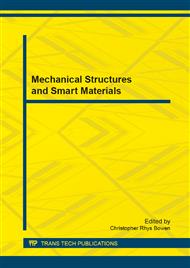p.121
p.127
p.131
p.135
p.141
p.145
p.149
p.153
p.157
Surface Roughness Analysis on Reactive Ion Etched Aluminium Deposited Wafer
Abstract:
This paper investigates the factors that affect the surface roughness on an Aluminium deposited wafer after reactive ion etching (RIE) using a combination of Tetrafluoromethane (CF4) and Oxygen (O2) gaseous. A total of four controllable process variables, with 16 sets of experiments were scrutinized using an orderly designed design of experiment (DOE). The four variables in the investigation are the composition of CF4 gas, the composition of O2 gas, RF power, and time. The estimate of effect calculated for the composition of CF4 gas, the composition of O2 gas, RF power, and time are-0.9813, -0.7488, -0.0438, and 4.7138 respectively. All factors gave negative effects except for time. This implies that the surface roughness decreases when the content of CF4, O2, and RF power is high. The results indicate that time is the most influential factor compared to the other three factors and is directly proportional to the surface roughness of the etched Aluminium deposited wafer.
Info:
Periodical:
Pages:
141-144
Citation:
Online since:
January 2014
Authors:
Price:
Сopyright:
© 2014 Trans Tech Publications Ltd. All Rights Reserved
Share:
Citation:


